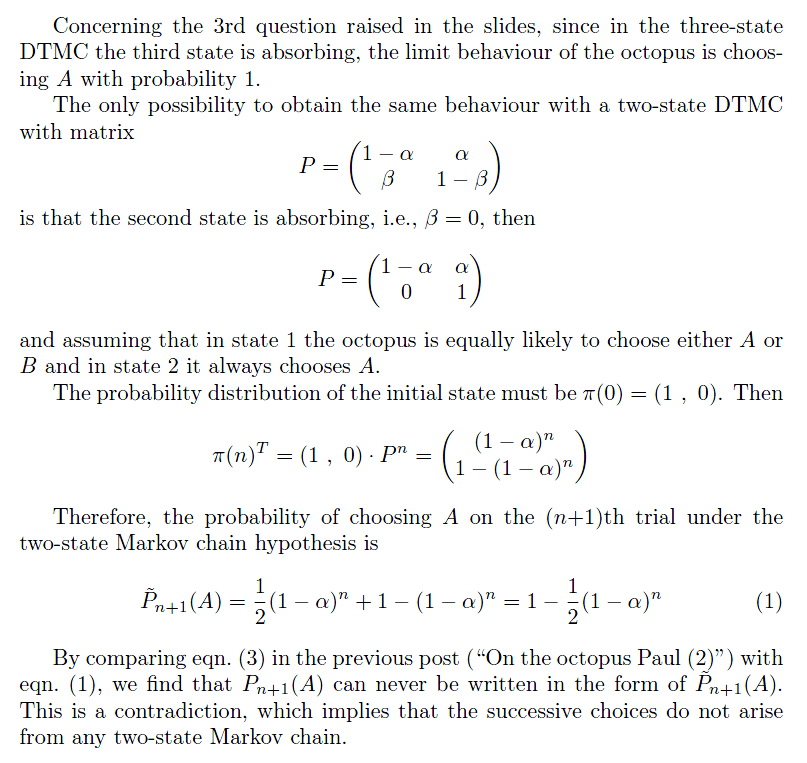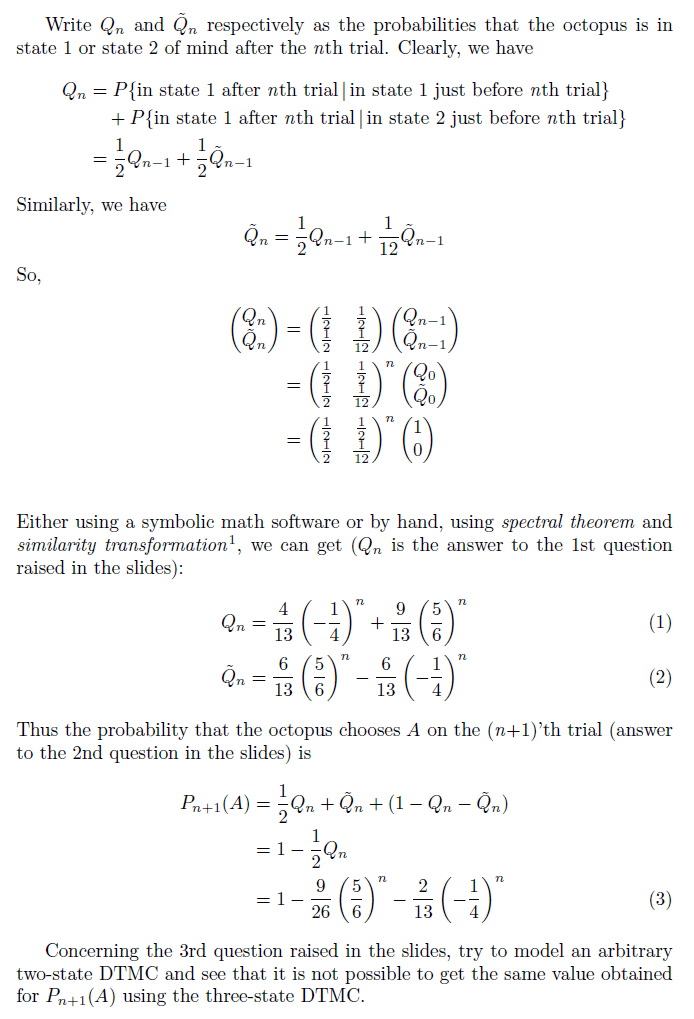Archive for the ‘Material’ Category
One-dimensional nearest-neighbour random walks
A random walk is a random process consisting of a sequence of discrete steps of fixed length. In the case of one-dimensional nearest-neighbour random walks, the reachable states are integer (or natural) numbers and at each step, the process jumps to the nearest-neighbour to the right with probability p or to the nearest-neighbour to the left with probability 1 - p.
A random walk with state space equal to Z (integer numbers) can be transient or null recurrent depending on p. If p=1/2 then it is null recurrent and in other cases it is transient. Look at the book by S. Ross (Example 4.3d).
A random walk with reflectant barrier at 0 (i.e., state space equal to non negative integers) can be transient, null recurrent or positive recurrent. Look here (local copy).
Some more slides on SSA
The SECOND part of the slides about “Stochastic Simulation of Biochemical Reactions” is available here.
Stochastic Simulation Algorithms
The first part of the slides about “Stochastic Simulation of Biochemical Reactions” is available here.
Birth-Death processes
The slides for birth-death processes are available here.
On the octopus Paul (and 3)

On the octopus Paul (2)

1 Technique not explained in the classroom, see for instance these notes.
On the octopus Paul (1)
 When I commented in the classroom the two first questions of the exercise of the octopus Paul (modelling its mind states with a DTMC), I misinterpreted the words “it is in state 1 just before…” as “it has been always in the state 1 before…”. Obviously, if we interpret the sentence correctly (“it is in state 1 at step n…”), we need to compute the transient probability distribution (after n steps), using the expression
When I commented in the classroom the two first questions of the exercise of the octopus Paul (modelling its mind states with a DTMC), I misinterpreted the words “it is in state 1 just before…” as “it has been always in the state 1 before…”. Obviously, if we interpret the sentence correctly (“it is in state 1 at step n…”), we need to compute the transient probability distribution (after n steps), using the expression
![]() I will publish here a solution for the exercise in the next days.
I will publish here a solution for the exercise in the next days.